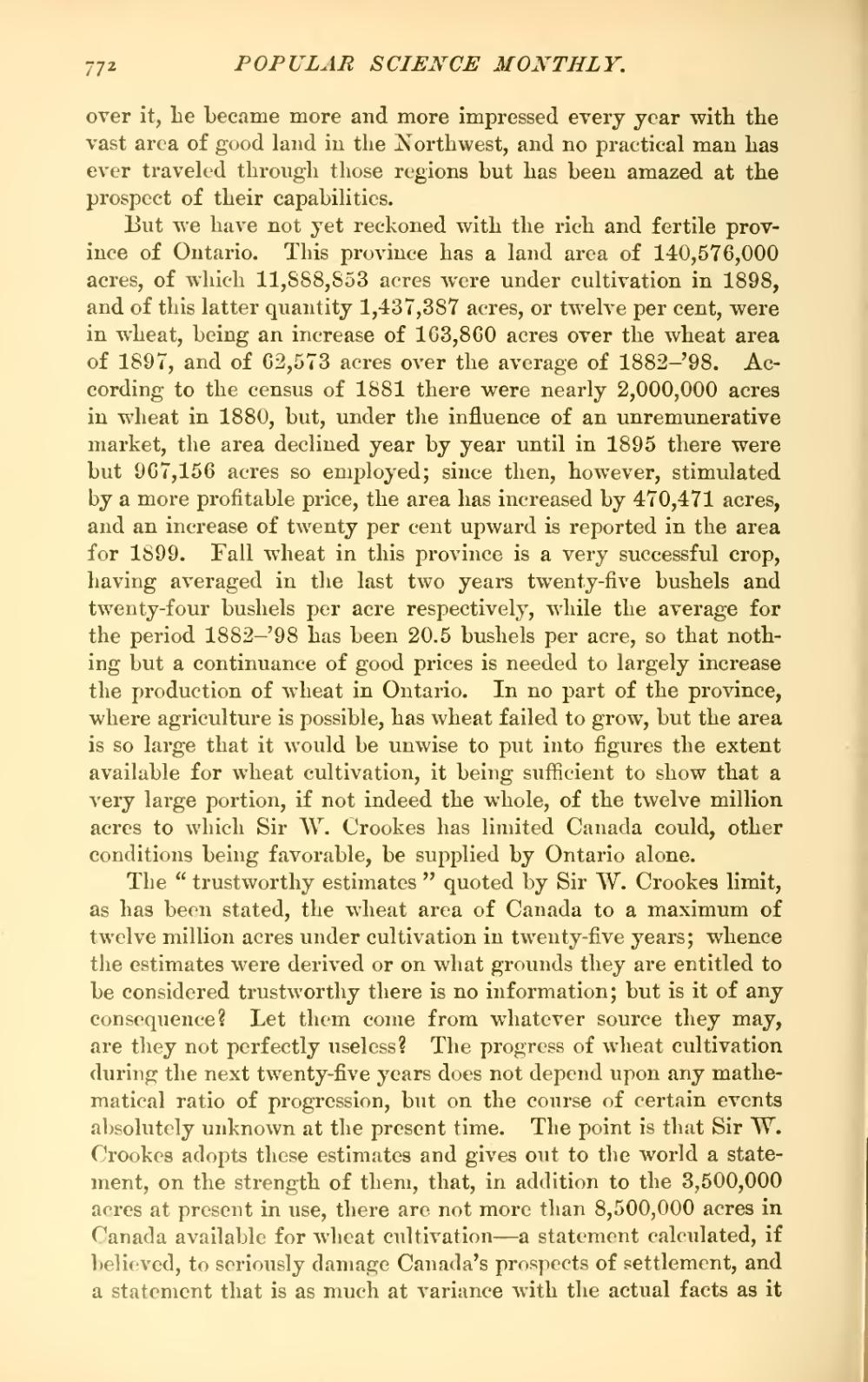over it, he became more and more impressed every year with the vast area of good land in the Northwest, and no practical man has ever traveled through those regions but has been amazed at the prospect of their capabilities.
But we have not yet reckoned with the rich and fertile province of Ontario. This province has a land area of 140,576,000 acres, of which 11,888,853 acres were under cultivation in 1898, and of this latter quantity 1,437,387 acres, or twelve per cent, were in wheat, being an increase of 163,860 acres over the wheat area of 1897, and of 62,573 acres over the average of 1882-98. According to the census of 1881 there were nearly 2,000,000 acres in wheat in 1880, but, under the influence of an unremunerative market, the area declined year by year until in 1895 there were but 967,156 acres so employed; since then, however, stimulated by a more profitable price, the area has increased by 470,471 acres, and an increase of twenty per cent upward is reported in the area for 1899. Fall wheat in this province is a very successful crop, having averaged in the last two years twenty-five bushels and twenty-four bushels per acre respectively, while the average for the period 1882-'98 has been 20.5 bushels per acre, so that nothing but a continuance of good prices is needed to largely increase the production of wheat in Ontario. In no part of the province, where agriculture is possible, has wheat failed to grow, but the area is so large that it would be unwise to put into figures the extent available for wheat cultivation, it being sufficient to show that a very large portion, if not indeed the whole, of the twelve million acres to which Sir W. Crookes has limited Canada could, other conditions being favorable, be supplied by Ontario alone.
The "trustworthy estimates" quoted by Sir W. Crookes limit, as has been stated, the wheat area of Canada to a maximum of twelve million acres under cultivation in twenty-five years; whence the estimates were derived or on what grounds they are entitled to be considered trustworthy there is no information; but is it of any consequence? Let them come from whatever source they may, are they not perfectly useless? The progress of wheat cultivation during the next twenty-five years does not depend upon any mathematical ratio of progression, but on the course of certain events absolutely unknown at the present time. The point is that Sir W. Crookes adopts these estimates and gives out to the world a statement, on the strength of them, that, in addition to the 3,500,000 acres at present in use, there are not more than 8,500,000 acres in Canada available for wheat cultivation—a statement calculated, if believed, to seriously damage Canada's prospects of settlement, and a statement that is as much at variance with the actual facts as it
